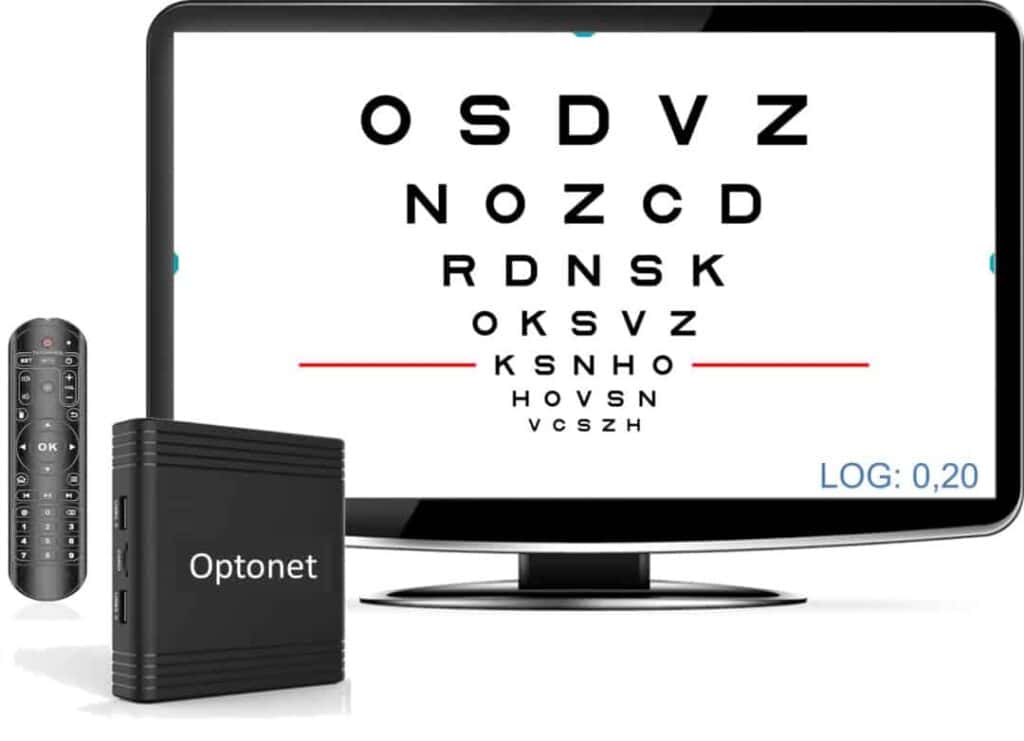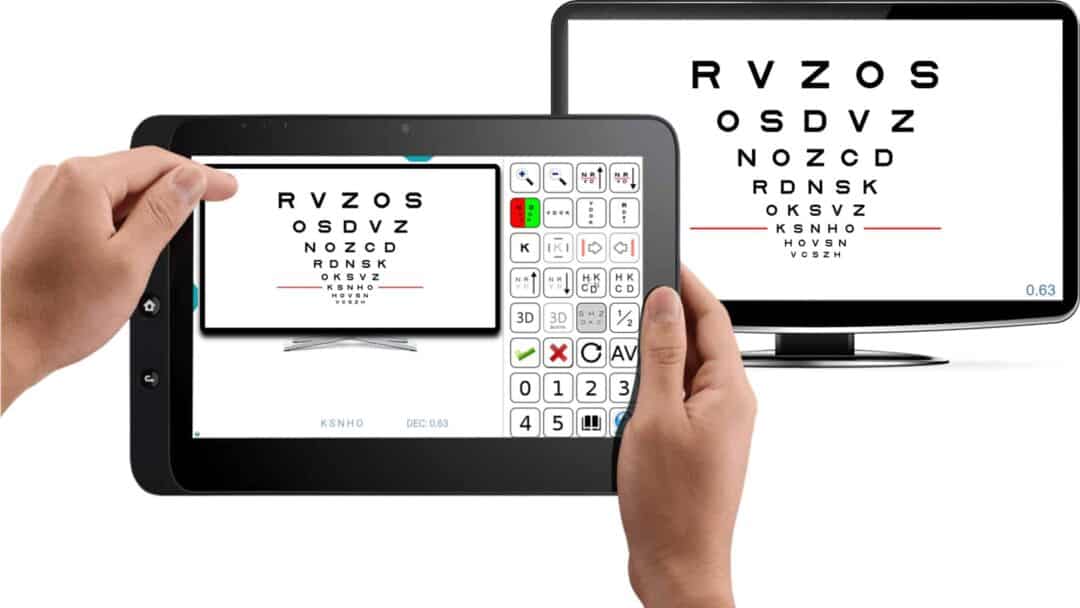The Optonet Vision Unit is compatible with a broad range of digital devices and runs in all regular operating systems, such as Windows, macOS, Android, iOS, and even on TV streaming media players (like the Amazon Fire TV Cube), to suit all budgets. Depending on the clinician’s needs and budget, we recommend:
Distance Vision Testing in Clinic #
To display charts just for distance vision, we recommend a Windows Mini PC (best option) or a TV player (budget option) connected to a computer monitor (e.g.: the Amazon Fire TV Cube offers a good quality/price ratio). You can also use a standard computer or laptop (most expensive option).

Near Vision Testing in Clinic #
For near vision testing, tablets are ideal. A minimum screen size of about 10” and full HD resolution (1920×1200 px) is recommended. The tablet can also be used as a remote controller for distance vision charts in the clinic, as explained in other section: Tablet as Remote Controller

Domiciliary vision testing #
For domiciliary visits (including school screenings), laptops are ideal, but tablets are also adequate. Optonet continues working even if the internet connection is temporarily lost.
Now, Optonet charts can also be displayed on a smartphone, which may be useful for bedside testing or triaging in hospitals. However, bear in mind that small phone screens limit what tests can be displayed (e.g., phones are too small for field testing).
Orthoptic Training #
Ideally, we recommend a laptop or standard computer, although higher model TV players (like the Amazon Cube) can also be suitable.
Remote consultations #
Clinicians can use any standard computer with Internet access (e.g., desktop or laptop). Patients can use a computer, tablet, or smartphone.
Monitor #
In general, any standard flat computer screen may offer excellent image quality for distance vision testing in clinic.
Binocular vision tests require red/blue filters; but alternatively, Optonet can display binocular charts on 3D passive screens in combination with circular polarizing filters. Unfortunately, passive 3D monitors are no longer readily available in computer stores, they are only made to order in China and are more expensive than conventional screens. For more information, please contact Optonet.
Size: For distance vision testing, a screen size of around 23 inches is ideal. Larger or smaller screen will affect the number of letters displayed simultaneously; however, larger screens (such as televisions) may lose sharpness for smaller letters.
If looking for a larger screen (e.g., to replace standard ETDRS charts with the same size and image quality), we recommend a 28-inch 4K monitor attached to a Mini-PC.
Resolution: Screen resolution must be at least Full HD (1920 x 1080 px), for optimal image sharpness.
Screen technology: IPS technology is highly advisable, especially for Contrast Sensitivity charts.
Built-in speakers: These are advisable (either in the computer or screen), to hear the beeps that signal test changes.
VESA compliant for monitor wall mounting.
Example of monitor: Monitor
** Note: Televisions are not recommended since they often offer lower image quality for letter charts at a much higher cost.
